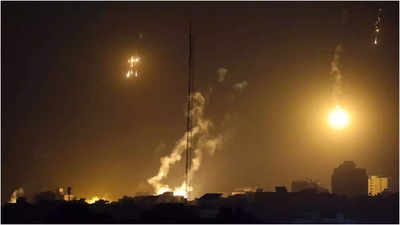
The rockets, targeting Israel's Upper Galilee region, were fired shortly after the Israeli Defense Forces (IDF) carried out airstrikes in southern Lebanon, particularly in the Nabatieh area. The airstrikes reportedly targeted a Hezbollah weapons storage facility and other military infrastructure. These strikes resulted in the death of ten Syrian nationals and injuries to five others, according to Lebanon's Health Ministry. Among the casualties was a commander in Hezbollah's Radwan force, a significant loss for the militant group.
The IDF confirmed that approximately 55 projectiles crossed from Lebanon into Israeli territory, with some landing in open areas, causing no injuries but igniting multiple fires. Earlier, another projectile from Lebanon injured two Israeli soldiers. The ongoing tit-for-tat violence has heightened concerns that the conflict could spiral out of control, despite ongoing diplomatic efforts to negotiate a ceasefire.
This latest flare-up occurs against the backdrop of delicate negotiations aimed at ending the ongoing conflict in Gaza. U.S. officials have indicated that ceasefire talks are in their final stages, but the violence on Israel's northern front poses a significant challenge to these efforts.
The situation remains highly volatile, with both sides demonstrating a willingness to escalate the conflict if provoked. As tensions continue to rise, international observers are closely monitoring developments, wary of the potential for a broader regional conflict.
The exchange of fire underscores the fragile security situation in the region and the complex web of alliances and hostilities that continue to shape the Middle East's geopolitical landscape.
Topics
Spotlight
